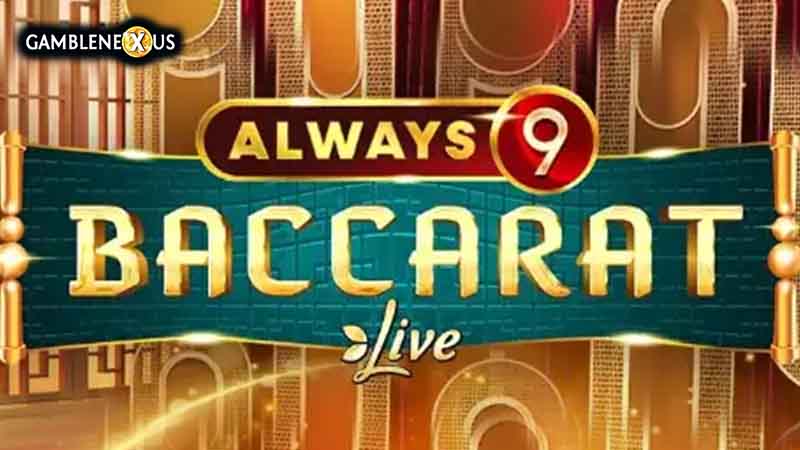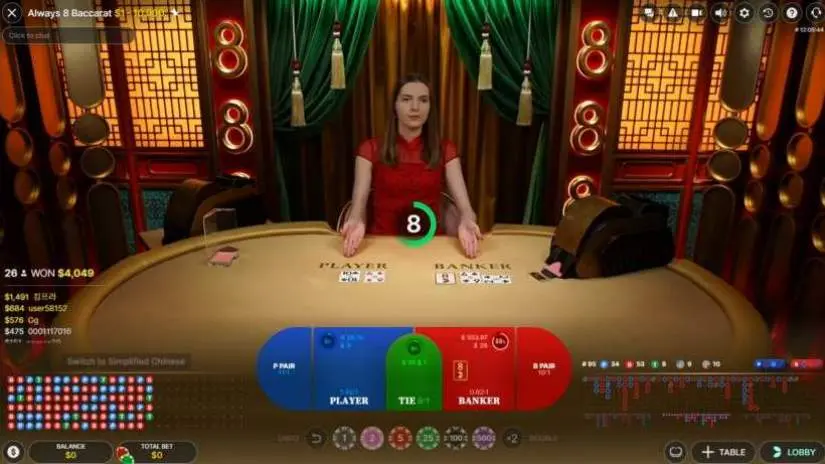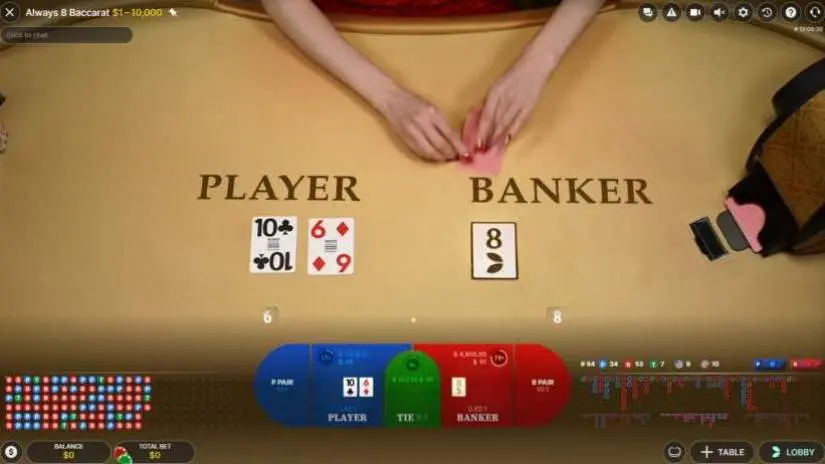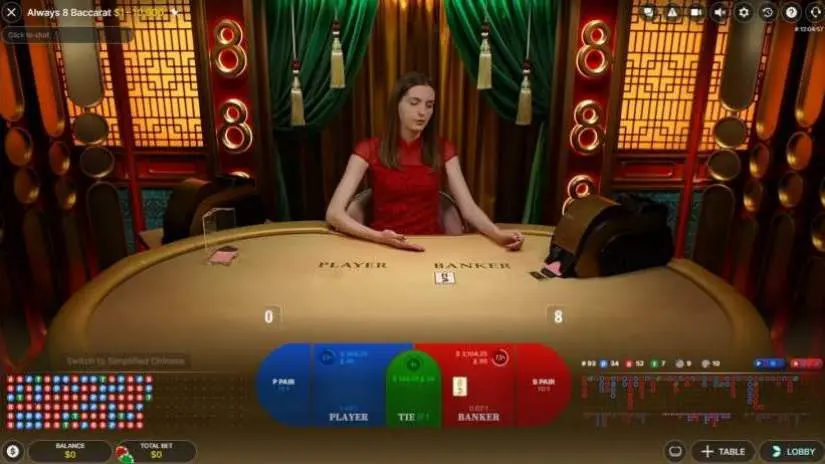Always 9 Baccarat Free Demo Game



The objective of Always 9 Baccarat by Evolution Gaming is the same as the original game: guess whose hand, the Player or the Banker, will win by getting the closest total to 9. However, in this game, the Banker always starts with 8 points, which changes the usual gameplay.
The game is played with eight standard decks of 52 cards each. These decks are constantly shuffled by a shoe shuffle machine. Only the numerical values of each card are taken into account.
Before each deal, players can place a bet on which hand – the Player’s or the Banker’s will win with a sum closer to 9. You can also place a bet on a Tie, which occurs when the Player and Banker have the same sum.
In Always 9 Baccarat, the Banker’s first card is always known in advance and is already on the table when the game round begins.
When the betting time is over, the dealer begins to deal two cards to the Player and one card to the Banker.
The sum of each hand is determined by subtracting the tens place from the sum of a hand with a value equal to or greater than 10.
For example, in Baccarat, a hand of 7 and 9 would be worth 6 (because 16-10=6). Similarly, the sum of face cards and 9 would be 9.
If the sum of the Player’s or Banker’s hand after the first two cards is 8 or 9 (a “natural” 8 or 9), neither hand receives more cards.
If the sum of the Player’s or Banker’s hand after the first two cards is 0-7, the “Third Card Rule” is used to determine whether a third card should be dealt to either hand or both hands. The Player is always dealt first.
| Player’s initial two-card hand | |
|---|---|
| 0-1-2-3-4-5 | Player draws a third card. |
| 6-7 | Player stands. |
| 8–9 (a “natural”) | No third card to either hand. |
| Banker’s initial two-card hand | Value of third card drawn by Player | ||||||||||
|---|---|---|---|---|---|---|---|---|---|---|---|
| No third card | 0 | 1 | 2 | 3 | 4 | 5 | 6 | 7 | 8 | 9 | |
| 0 | D | D | D | D | D | D | D | D | D | D | D |
| 1 | D | D | D | D | D | D | D | D | D | D | D |
| 2 | D | D | D | D | D | D | D | D | D | D | D |
| 3 | D | D | D | D | D | D | D | D | D | S | D |
| 4 | D | S | S | D | D | D | D | D | D | S | S |
| 5 | D | S | S | S | S | D | D | D | D | S | S |
| 6 | S | S | S | S | S | S | S | D | D | S | S |
| 7 | S | S | S | S | S | S | S | S | S | S | S |
| 8 | S | S | S | S | S | S | S | S | S | S | S |
| 9 | S | S | S | S | S | S | S | S | S | S | S |
D-Draw; S – Stand
If the Player’s hand stands on a 6 or 7, then a Banker’s hand totalling 3, 4 or 5 must draw, while a Banker’s hand totalling 6 must stand. Whoever gets the hand closest to a total of 9 wins. If the round ends in a Tie, bets placed on Player and Banker are returned.
The optimal theoretical Return to Player (RTP) is 98.29% based on the Banker.
| Bet | Return to Player |
|---|---|
| Player | 98.02% |
| Banker | 98.29% |
| Tie | 95.89% |
| P Pair | 89.64% |
| B Pair | 84.62% |



